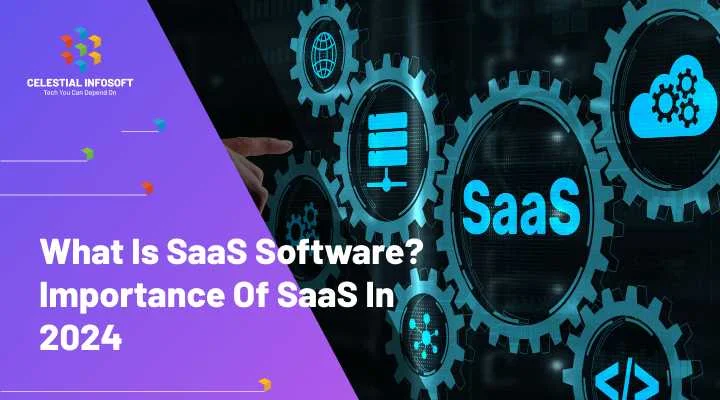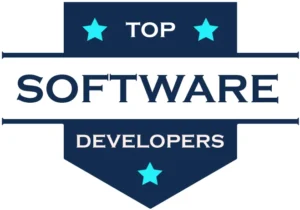
In this post, we’ll look at what software as a service (SaaS) is. an innovative technology that has changed the way businesses access and use software applications. SaaS, often known as cloud-based software, is rising in popularity due to the many benefits it offers over traditional software models.
What is SaaS?
Software as a Service (SaaS) is a software delivery model where applications are hosted in the cloud and accessed by users over the internet. Instead of purchasing and installing software on individual devices, users subscribe to the software and access it through a web browser. This model offers several advantages, including lower upfront costs, easier scalability, automatic updates, and accessibility from anywhere with an internet connection. SaaS has become increasingly popular in recent years due to its convenience and cost-effectiveness, making it a preferred choice for businesses of all sizes.
The History and Evolution of SaaS
The history of SaaS dates back to the 1960s, when IBM and other mainframe providers offered software on a service bureau basis. However, SaaS as we know it began in the late 1990s with the rise of the internet and the development of application service providers (ASPs). The early 2000s saw the emergence of pioneers like Salesforce, which revolutionized the industry by providing customer relationship management (CRM) software via the web. Over the years, SaaS has evolved to become a dominant delivery model, with advancements in cloud computing, improved internet connectivity, and a shift towards subscription-based models fueling its growth.
The importance of SaaS Software in 2024
In 2024, SaaS will be more important than ever due to the increasing reliance on digital tools and remote work. The COVID-19 pandemic has accelerated the adoption of cloud-based solutions, including SaaS, as businesses seek flexible and efficient ways to operate. SaaS offers the flexibility to scale resources up or down based on demand, which is crucial in today’s fast-paced business environment. Additionally, the continuous updates and improvements provided by SaaS vendors ensure that businesses have access to the latest features and security patches, helping them stay competitive in their respective markets.
Key Features of SaaS Software
SaaS software has several key features that differentiate it from traditional software models.
- Accessibility: SaaS applications are accessible from any device with an internet connection, providing flexibility and mobility.
- Subscription-based Pricing: Users typically pay a subscription fee, which can be monthly or annually, rather than a one-time purchase.
- Automatic Updates: Software updates and patches are managed by the service provider, ensuring users always have the latest version.
- Scalability: SaaS solutions can easily scale up or down based on user needs, making them ideal for growing businesses.
- Multi-tenancy: Multiple users share the same application and infrastructure, with data isolation ensuring security and privacy.
- Integration: SaaS applications often offer integration capabilities with other software and services, enhancing functionality and user experience.
Difference between SaaS software and traditional software
SAAS platforms differ from regular software applications in that they are hosted in the cloud and accessed via the Internet, whereas traditional software is typically installed on local computers or servers. SaaS offers advantages such as lower upfront costs, easier maintenance, and greater accessibility, while traditional software may provide more control and customization options.
How SaaS Software is Changing Businesses in 2024
Software as a Service (SaaS) has been a game-changer for businesses across industries. Here are some key ways in which SaaS software is changing the business landscape:
- Cost-Effective Solutions: SaaS eliminates the need for businesses to invest in expensive hardware and software infrastructure. Instead, they can subscribe to a SaaS solution and pay for only what they use, making it a cost-effective option for businesses of all sizes.
- Scalability: SaaS solutions are highly scalable, allowing businesses to easily scale their operations up or down based on their needs. This scalability makes it easier for businesses to adapt to changing market conditions and grow their operations.
- Accessibility: SaaS solutions are typically accessed via the internet, making them accessible from anywhere with an internet connection. This accessibility allows businesses to easily collaborate with remote teams and access their data on the go.
- Integration: SaaS solutions often offer seamless integration with other software systems, allowing businesses to streamline their operations and improve efficiency. This integration can help businesses automate repetitive tasks and improve overall productivity.
- Security: Many SaaS providers offer robust security measures to protect their customers’ data. This includes encryption, regular security updates, and compliance with industry standards and regulations.
- Updates and Maintenance: SaaS providers handle all updates and maintenance of the software, ensuring that businesses always have access to the latest features and improvements without needing to manage the updates themselves.
- Data Analytics: SaaS solutions often come with built-in analytics tools that allow businesses to gather insights from their data. These insights can help businesses make informed decisions and improve their operations.
Overall, SaaS software is changing businesses by providing cost-effective, scalable, and accessible solutions that help improve efficiency, productivity, and decision-making.
Some of the best SaaS software is available in the market
- Salesforce: A cloud-based customer relationship management (CRM) platform that helps businesses manage their sales, customer service, marketing, and more.
- Microsoft 365: A suite of productivity applications, including Word, Excel, PowerPoint, and Outlook, offered as a subscription service.
- Google Workspace: Formerly known as G Suite, it includes Gmail, Google Drive, Google Docs, Sheets, Slides, and more, for collaboration and productivity.
- Zoom: A video conferencing platform that became widely popular for remote work and virtual meetings.
- Slack: A messaging and collaboration tool for teams that allows for real-time communication and file sharing.
- HubSpot: An inbound marketing, sales, and customer service platform that helps businesses attract visitors, convert leads, and close customers.
- Adobe Creative Cloud: A suite of creative software applications for graphic design, video editing, web development, and photography, available through a subscription.
- Dropbox: A file hosting service that offers cloud storage, file synchronization, and collaboration features.
- Zendesk: A customer service software that provides ticketing, self-service options, and customer support features.
- Shopify: An e-commerce platform that allows businesses to set up online stores and sell products.
These are just a few examples, and there are many more SaaS products available across various industries and use cases.
Why does every business need to develop its own SaaS product for their business?
While developing a custom SaaS (software as a service) product can offer numerous benefits, it’s not a necessity for every business. SaaS software solutions often help many businesses, providing cost-effective and efficient tools for functions such as accounting, customer relationship management, and project management. Businesses with specific and unique requirements that cannot be fulfill by existing software solutions may find it necessary to develop a custom SaaS product. This can provide them with a competitive advantage by offering innovative features or functionalities that differentiate them from competitors.
However, if you want to build a proper SaaS platform, you must choose the best and most professional software company able to manage this type of project so that you do not lose money on useless software.
Conclusion
Software as a Service (SaaS) represents a revolutionary approach to software delivery, offering numerous advantages over traditional on-premise solutions. By providing access to software applications over the internet, SaaS eliminates the need for costly hardware, software maintenance, and lengthy installation processes. This cloud-based model offers scalability, flexibility, and cost-effectiveness, making it an attractive option for businesses of all sizes. With its ability to streamline operations, improve collaboration, and enhance productivity, SaaS has become a driving force behind digital transformation in the modern business landscape.





Download this app to get more discount